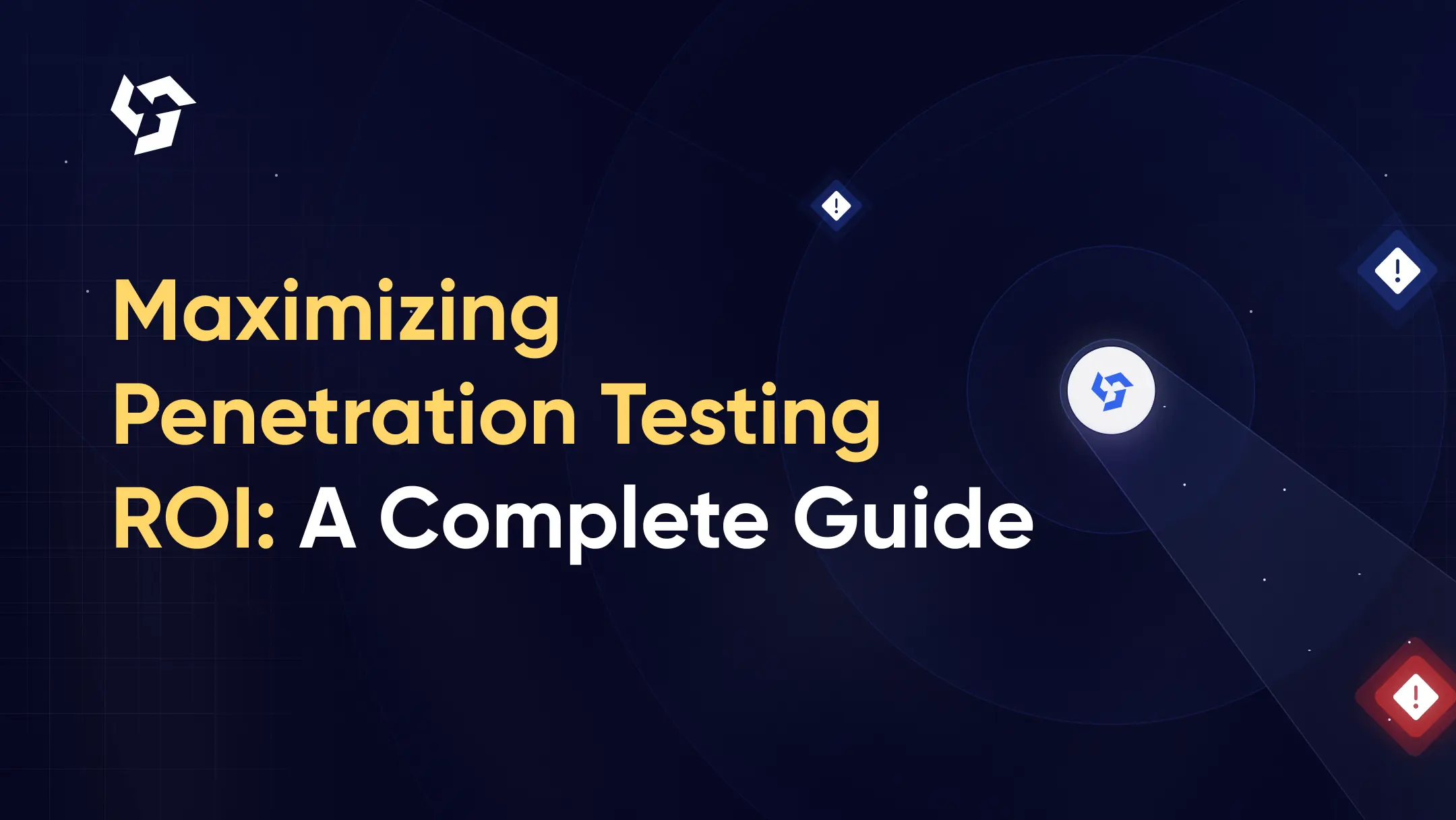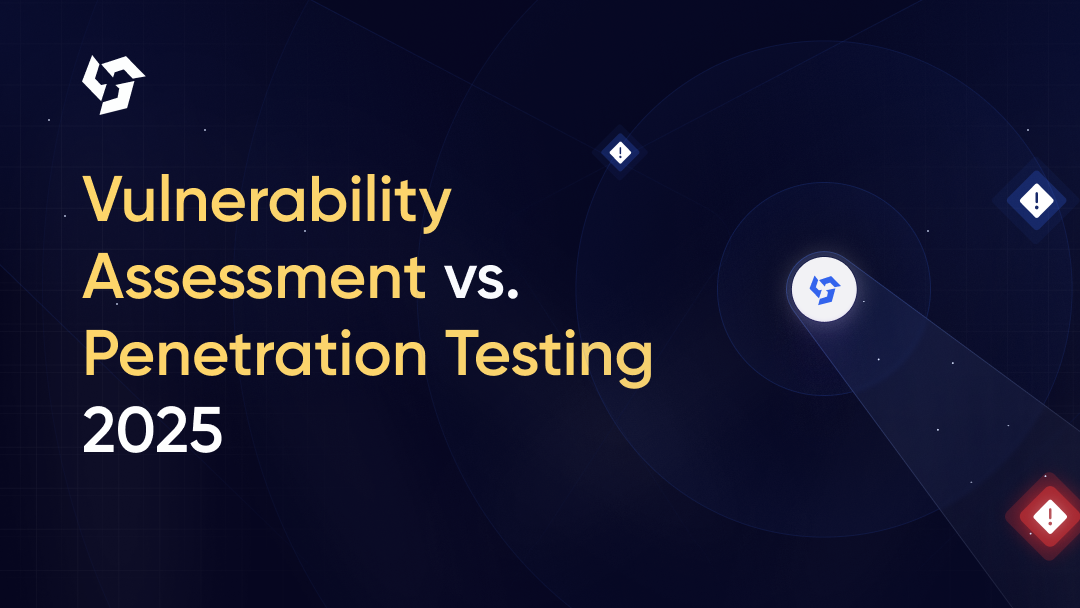Thick client penetration testing simulates real-world attacks on desktop-based applications to identify vulnerabilities across local storage, authentication, and server communication. It examines how client software like banking platforms, healthcare applications, or enterprise ERP tools handle sensitive operations and interact with backend systems.
As organizations rely heavily on thick clients to process critical business data, the attack surface has expanded beyond just servers, exposing risks in both local and network layers. Traditional web or network testing often overlooks these application-specific weaknesses, such as insecure storage or flawed protocols.
That’s why focused thick client pentesting is essential to uncover logic flaws, misconfigurations, and security gaps before they lead to real-world breaches.
tl;dr: Thick client pentesting uncovers vulnerabilities in local storage, client logic, and server communication for desktop applications across industries like finance, healthcare, and government. The process involves reverse engineering binaries, static and dynamic analysis, and testing client-server interactions to find hidden flaws. AppSecure delivers these tests safely with detailed, actionable reports and remediation guidance to protect critical data and ensure compliance.
Common vulnerabilities found in thick client applications
First, let’s look at the common vulnerabilities that thick client penetration testing often uncovers:
- Insecure local data storage
Thick clients frequently cache sensitive data such as credentials, session tokens, or personal information on the local machine. This data may be stored in plaintext within configuration files, registry keys, SQLite databases, or log files.
Even when “obfuscated,” weak reversible encoding (like Base64 or ROT13) offers no real security. Attackers can perform filesystem analysis or memory dumps to extract this data and use it to gain unauthorized access or escalate privileges.
- Weak or missing encryption in data transmission
A recurring issue in thick clients is improper encryption of client–server communication. Applications may use HTTP instead of HTTPS, downgrade TLS versions, or fail to validate server certificates.
In such cases, an attacker with access to the same network can intercept traffic via tools like Burp Suite or mitmproxy. Beyond passive sniffing, attackers can also tamper with requests, injecting malicious payloads or replaying previous requests to manipulate backend systems.
- Hardcoded credentials or API keys
Many compiled executables and DLLs contain embedded credentials or API keys used for authentication with backend services. These can be revealed by reverse engineering with tools like IDA Pro, Ghidra, or even simple string extraction (e.g., using strings in Linux).
Once exposed, attackers can use these secrets to impersonate legitimate clients, access hidden API endpoints, or pivot deeper into the environment.
- Logic bypass through client-side manipulation
Business logic is often partially enforced on the client side, creating opportunities for attackers to manipulate how workflows function. By using tools like OllyDbg, x64dbg, or dynamic binary patching, attackers can bypass restrictions such as purchase limits, licensing checks, or multi-factor authentication prompts.
Memory tampering and API hooking techniques can also be used to alter application behavior at runtime without needing to modify backend code.
- Lack of authentication or session handling
Authentication flows in thick clients can be weak or inconsistently enforced. For instance, some applications rely only on client-side validation before granting access to sensitive features.
Attackers can bypass login screens by manipulating function calls, replaying intercepted tokens, or injecting forged session IDs. Poor session expiration policies also leave users vulnerable to replay or session fixation attacks, especially if tokens are stored insecurely on the client machine.
- DLL hijacking and insecure library loading
Thick clients built on Windows are highly susceptible to DLL hijacking. If a required DLL is missing, Windows will search for it in directories defined by the DLL search order, often including writable directories.
An attacker can place a malicious DLL with the same name in a higher-priority location, causing the application to load and execute it with the application’s privileges. This can escalate privileges if the client runs with elevated rights.
Penetration testers often use SysInternals’ Process Monitor or Dependency Walker to map DLL loading behavior and identify hijacking opportunities.
- Input validation flaws and injection attacks
Improper sanitization of user inputs can open thick clients to injection-based attacks. SQL injection is common when user-supplied data is concatenated into queries executed against local or remote databases. Command injection may occur when system calls are made with unsanitized input.
Some thick clients also accept XML or serialized objects, which can be exploited through XML External Entity (XXE) attacks or deserialization flaws. Exploiting these often gives attackers direct access to backend systems or local resources.
- Outdated third-party dependencies
Thick clients often rely on large sets of third-party libraries, ranging from cryptography modules to UI frameworks. If these dependencies are not regularly patched, known CVEs (Common Vulnerabilities and Exposures) can be leveraged by attackers.
For example, applications built on outdated OpenSSL versions remain vulnerable to attacks like Heartbleed. Identifying and exploiting outdated dependencies is straightforward for attackers using dependency scanners or by fingerprinting version information embedded in binaries.
Thick client penetration testing methodology
Thick client penetration testing follows a structured approach aligned with industry standards such as OWASP, PTES, and OSSTMM. Here are the key stages involved:
- Scoping and understanding the application architecture
The engagement begins with defining the scope, including client features, backend systems, and network dependencies. Testers analyze whether the application uses client–server protocols (HTTP(S), TCP/IP, custom RPC) or hybrid models.
Architecture diagrams are reviewed to understand trust boundaries, data flow, and potential attack surfaces. This ensures that testing covers both local and remote components comprehensively.
- Information gathering and technology stack identification
Fingerprinting the tech stack is crucial to map potential weaknesses. Tools like PE Studio, dotPeek, or objdump are used to analyze the binary’s headers and dependencies.
Testers identify frameworks (.NET, Java, Delphi, C++), database engines (SQLite, MS SQL, Oracle), and cryptographic libraries. Mapping stack components against CVE databases helps locate exploitable vulnerabilities early.
- Local environment setup and reverse engineering
A sandboxed test environment is created, often with VM snapshots for rollback. Reverse engineering is carried out using IDA Pro, Ghidra, Radare2, or dnSpy.
Testers disassemble executables to identify hardcoded secrets, hidden APIs, and business logic enforced on the client side. They also look for anti-debugging mechanisms and apply patching techniques to bypass them.
- Static analysis of application code and configurations
Static analysis inspects binaries, configuration files, registry keys, and embedded resources. Sensitive values such as connection strings, API tokens, and encryption keys are extracted.
Code analysis focuses on weak crypto implementations (e.g., ECB mode in AES, MD5 hashing), insecure error handling, and unsafe default settings. File permissions and registry ACLs are also tested for privilege escalation vectors.
- Dynamic testing of client-server communication
Testers intercept and manipulate traffic between the client and backend using Burp Suite, mitmproxy, or Fiddler. Weaknesses like improper TLS validation, replayable tokens, and missing HMAC checks are detected.
Protocol fuzzing is performed to evaluate how the server responds to malformed or out-of-sequence packets. Testers also validate whether rate limiting and anti-automation measures are enforced.
- Authentication and authorization testing
Authentication mechanisms are assessed for flaws such as hardcoded credentials, weak password policies, or bypassable 2FA checks. Authorization testing ensures server-side enforcement of access control; testers attempt horizontal and vertical privilege escalation by modifying request parameters or tokens.
Replay and session fixation attacks are simulated to validate token lifecycle management.
- Business logic and workflow abuse checks
Client-side enforcement of workflows is examined to identify flaws. By manipulating requests, patching functions, or replaying calls, testers attempt to bypass approval gates, double-submit transactions, or access restricted features.
Specific focus is placed on license validation, financial operations, and multi-step workflows, which are often vulnerable to logic abuse.
- Binary and memory manipulation
Debuggers like x64dbg, OllyDbg, and WinDbg are used to analyze program execution at runtime. Memory patching allows bypassing authentication checks, modifying balances in finance apps, or unlocking premium features.
API hooking (e.g., using Frida or API Monitor) enables interception and alteration of critical function calls in real time.
- Network traffic interception and encryption validation
Encryption mechanisms are tested for robustness and proper implementation. Testers validate TLS configurations (versions, ciphers, forward secrecy) and attempt SSL stripping or certificate forgery. Certificate pinning is assessed by bypassing it with tools like Frida scripts or custom CA injection.
If proprietary encryption is used, reverse engineering is applied to test key management and randomness.
- Reporting, risk prioritization, and remediation guidance
Finally, findings are documented with CWE/CVE references, exploit demonstrations, and risk ratings aligned with CVSS scoring. Business impact is mapped against technical severity to guide prioritization.
Remediation guidance includes secure coding practices, configuration hardening, patch management, and architectural redesigns where needed. Reports also recommend integrating security testing into the SDLC for continuous resilience.
When should you conduct thick client penetration testing?
Knowing when to conduct thick client penetration testing is just as important as the testing itself. Proper timing ensures vulnerabilities are identified early, compliance requirements are met smoothly, and critical applications remain resilient against evolving threats.
Below are the most common scenarios where thick client pentesting delivers the most value, along with the recommended timing:
| Ideal testing scenario | Recommended timing |
|---|---|
| Before releasing a new desktop application | Perform pentesting in the pre-production phase to validate security of client-side logic, local storage, and communication channels before user deployment. |
| After major feature updates or backend changes | Run tests immediately after introducing new modules, third-party integrations, or API connections, ensuring they don’t introduce new security gaps. |
| During compliance audits in regulated industries | Schedule pentesting as part of regulatory reviews (banking, healthcare, or government) to validate adherence to standards like HIPAA, PCI DSS, or ISO 27001. |
| When migrating from legacy systems to modern architectures | Conduct testing during or just after migration to ensure outdated libraries, insecure protocols, or weak configurations are not carried over. |
| As part of annual or bi-annual security reviews | Include thick client pentesting in routine security assessments for mission-critical software, ensuring resilience against new exploits and zero-day threats. |
AppSecure’s approach to thick client penetration testing
Thick client penetration testing needs more than basic scans. It requires reverse engineering, checking client-server logic, and safe attack simulations. AppSecure delivers this with an expert-led and compliance-focused approach.
Here are the key stages involved in our pentesting methodology:
- Manual testing aligned with OWASP and SANS methodologies
AppSecure relies heavily on manual assessments that go far beyond tool-based scanning. Our methodology follows OWASP’s thick client security testing guide and SANS best practices to uncover business logic flaws, insecure API calls, weak authentication flows, and session handling issues.
By blending hacker creativity with structured frameworks, we identify vulnerabilities that automated tools often overlook.
- Reverse engineering and decompilation expertise
Thick clients frequently use compiled binaries, which hide logic and secrets within executables. Our team applies reverse engineering and decompilation techniques to analyze code paths, inspect DLLs, and uncover hardcoded credentials or weak encryption mechanisms.
This enables a deeper understanding of how the application communicates with backend servers and reveals risks such as obfuscation bypass or code tampering.
- In-depth testing of local and server-side components
Unlike traditional web pentests, thick client applications store and process sensitive data locally. AppSecure examines file system interactions, registry entries, configuration storage, and local caching to detect improper data handling.
Simultaneously, the team tests the server-side APIs, database queries, and authentication mechanisms that the client communicates with, ensuring holistic coverage of the attack surface.
- Secure, production-safe exploitation methods
Exploitation is conducted in a controlled, production-safe manner to validate vulnerabilities without risking service downtime.
AppSecure uses sandbox environments, controlled payloads, and traffic interception tools (such as Burp Suite and custom scripts) to confirm exploitability of findings while maintaining operational stability.
- Actionable, developer-friendly remediation reports
AppSecure’s penetration testing reports go beyond listing vulnerabilities. We provide technical proof-of-concept, detailed attack narratives, and prioritized remediation steps.
Each issue is mapped to CWE and CVSS standards, ensuring clarity for compliance teams while giving developers practical, code-level fixes they can immediately apply.
- Retesting to confirm fixes
Once remediation is implemented, AppSecure performs a full retest to validate fixes and ensure no regressions. This step confirms that the threat landscape has been reduced effectively, giving organizations confidence before rolling out updates.
- Compliance-aware testing for PCI DSS, HIPAA, ISO 27001, and more
Regulated industries require pentesting approaches that align with compliance frameworks.
AppSecure maps every finding against relevant standards, such as PCI DSS for payment data, HIPAA for healthcare applications, and ISO 27001 for information security. This ensures that pentest outcomes support both security hardening and audit readiness.
Best practices for secure thick client development
Building secure thick client applications requires a proactive approach that integrates security controls directly into the software lifecycle. Below are key practices that development teams should follow to reduce risk and strengthen overall resilience.
- Encrypt sensitive data at rest and in transit
Thick client applications often handle sensitive business data, making encryption critical. AES-256 or similar strong encryption should be applied for data at rest, while TLS 1.3 must be enforced for transmission.
This ensures confidentiality and integrity even if attackers gain access to local storage or intercept network traffic.
- Avoid storing credentials or secrets in binaries
Hardcoding credentials, API keys, or encryption keys in application binaries exposes a major attack surface. Attackers can easily extract these values through reverse engineering or memory dumping.
Instead, implement secure key vaults or OS-provided secure storage mechanisms like DPAPI (Windows) or Keychain (macOS).
- Use strong authentication and session management
Authentication mechanisms must go beyond simple username-password combinations. Multi-factor authentication (MFA), token-based authentication, and short-lived session tokens with secure renewal processes reduce risks of account hijacking and replay attacks.
Session tokens should be tied to device fingerprints where possible.
- Regularly update libraries and frameworks
Outdated libraries are common vectors for exploits such as DLL hijacking or insecure deserialization. Establish automated dependency checks with tools like Dependabot or OWASP Dependency-Check to ensure components are patched against known CVEs before release.
- Implement code obfuscation to protect logic
Since thick clients execute locally, attackers can reverse engineer binaries to uncover business logic or bypass restrictions. Code obfuscation, string encryption, and anti-debugging techniques make reverse engineering significantly harder, raising the cost for attackers.
- Conduct periodic penetration tests before and after releases
Security testing should not be a one-time activity. Conducting red team–style penetration tests before product launches, and after major updates, ensures new vulnerabilities are caught early. This continuous testing cycle aligns with secure SDLC practices and compliance mandates like DORA and PCI DSS.
Strengthen security with thick client penetration testing
Thick client applications introduce unique risks with both local and server-side attack surfaces. Automated scans alone cannot uncover issues like business logic flaws, insecure local storage, or weak client-server communication.
These gaps make specialized thick client penetration testing critical for protecting sensitive business data and meeting compliance requirements.
At AppSecure, we go beyond generic testing to deliver tailored thick client pentests that simulate real-world attack scenarios. Our approach helps you detect hidden weaknesses, validate security controls, and ensure your applications are resilient against modern threats.
Contact AppSecure today to secure your thick client applications with expert-led penetration testing designed to match your business environment.
FAQs
- Which industries benefit most from thick client pentesting?
Industries like finance, healthcare, government, and large enterprises benefit the most because they handle sensitive data and rely on desktop applications for critical operations.
- Can AppSecure test both Windows and macOS desktop applications?
Yes. AppSecure can test both Windows and macOS applications, checking how the client works locally and how it communicates with servers.
- How does AppSecure handle reverse engineering during the test?
Reverse engineering is done safely in a secure environment to examine the application’s code and logic without affecting live systems.
- Will thick client testing affect live production systems?
No. Tests are performed in sandboxed or test environments, so production apps and user data remain safe.
- What deliverables do we receive after a thick client audit?
You get a clear report with findings, severity levels, practical fixes, and guidance to improve both local and server-side security.

Ankit is a B2B SaaS marketing expert with deep specialization in cybersecurity. He makes complex topics like EDR, XDR, MDR, and Cloud Security accessible and discoverable through strategic content and smart distribution. A frequent contributor to industry blogs and panels, Ankit is known for turning technical depth into clear, actionable insights. Outside of work, he explores emerging security trends and mentors aspiring marketers in the cybersecurity space.


.png)









































.png)
.png)

.png)
.png)
.png)
.png)
.png)

.png)
.png)



.png)




.png)
.png)
.png)
.png)

.png)
.png)
.png)

.png)
.png)
.png)
.png)
.png)

.png)









.webp)





.webp)


.webp)

.webp)




.webp)
